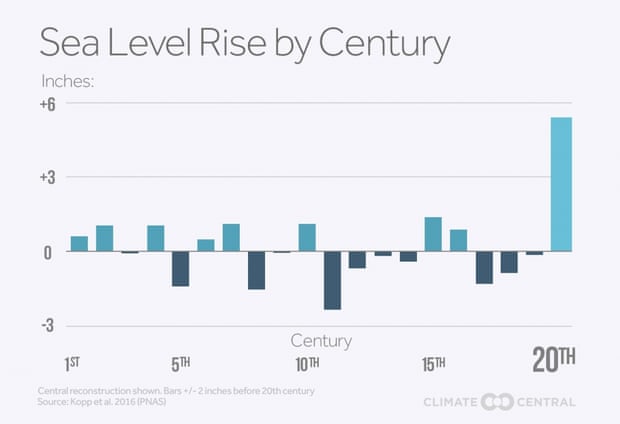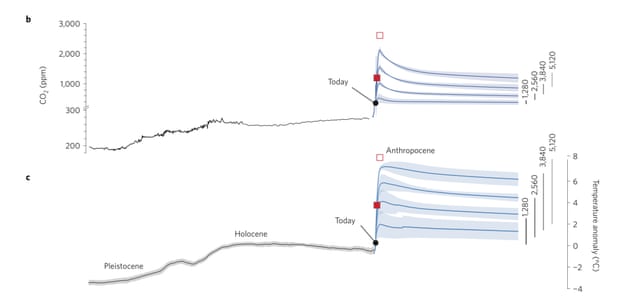
Recently, The Guardian reported on a significant new study published in Nature Climate Change, finding that even if we meet our carbon reduction targets and stay below the 2°C global warming threshold, sea level rise will eventually inundate many major coastal cities around the world.
20% of the world’s population will eventually have to migrate away from coasts swamped by rising oceans. Cities including New York, London, Rio de Janeiro, Cairo, Calcutta, Jakarta and Shanghai would all be submerged.
The authors looked at past climate change events and model simulations of the future. They found a clear, strong relationship between the total amount of carbon pollution humans emit, and how far global sea levels will rise. The issue is that ice sheets melt quite slowly, but because carbon dioxide stays in the atmosphere for a long time, the eventual melting and associated sea level rise are effectively locked in.
As a result, the study authors found that due to the carbon pollution humans have emitted so far, we’ve committed the planet to an eventual sea level rise of 1.7 meters (5.5 feet). If we manage to stay within the 1 trillion ton carbon budget, which we hope will keep the planet below 2°C warming above pre-industrial levels, sea levels will nevertheless rise a total of about 9 meters (30 feet). If we continue on a fossil fuel-heavy path, we could trigger a staggering eventual 50 meters (165 feet) of sea level rise.
Predicting how quickly sea levels will rise is a challenge. However, two other studies just published in the Proceedings of the National Academy of Sciences found that the Antarctic ice sheet could melt more quickly than previously thought, and thus contribute to relatively rapid sea level rise. Over the past century, global sea level has risen faster than at any time in the past two millennia, and most of the recent sea level rise is due to human-caused global warming. Several feet of sea level rise this century is likely, with a possibility of 5 feet or more.

Sea level change during each of the twenty centuries of the Common Era. Illustration: Climate Central, based on Kopp et al. (2016), published in the Proceedings of the National Academy of Sciences.
The Nature Climate Change study didn’t just look at sea level rise; it also looked at global temperature changes. Earth’s sharpest climate changes over the past half million years have occurred when the planet transitions from a ‘glacial’ to ‘interglacial’ period, and vice-versa.
Right now we’re in a warm interglacial period, having come out of the last ice age (when New York City and Chicago were under an ice sheet) about 12,000 years ago. During that transition, the Earth’s average surface temperature warmed about 4°C, but that temperature rise occurred over a period of about 10,000 years.
In contrast, humans have caused nearly 1°C warming over the past 150 years, and we could trigger anywhere from another 1 to 4°C warming over the next 85 years, depending on how much more carbon we pump into the atmosphere.

Atmospheric carbon dioxide levels (top) and average global surface temperature (bottom) from the past 20,000 years to the next 10,000 years in various emissions scenarios. Illustration: Clark et al. (2016), Nature Climate Change.
What humans are in the process of doing to the climate makes the transition out of the last ice age look like a casual stroll through the park. We’re already warming the Earth about 20 times faster than during the ice age transition, and over the next century that rate could increase to 50 times faster or more. We’re in the process of destabilizing the global climate far more quickly than happens even in some of the most severe natural climate change events.
That rapid climate destabilization is what has climate scientists worried.
Posted by dana1981 on Wednesday, 24 February, 2016
 |
The Skeptical Science website by Skeptical Science is licensed under a Creative Commons Attribution 3.0 Unported License. |